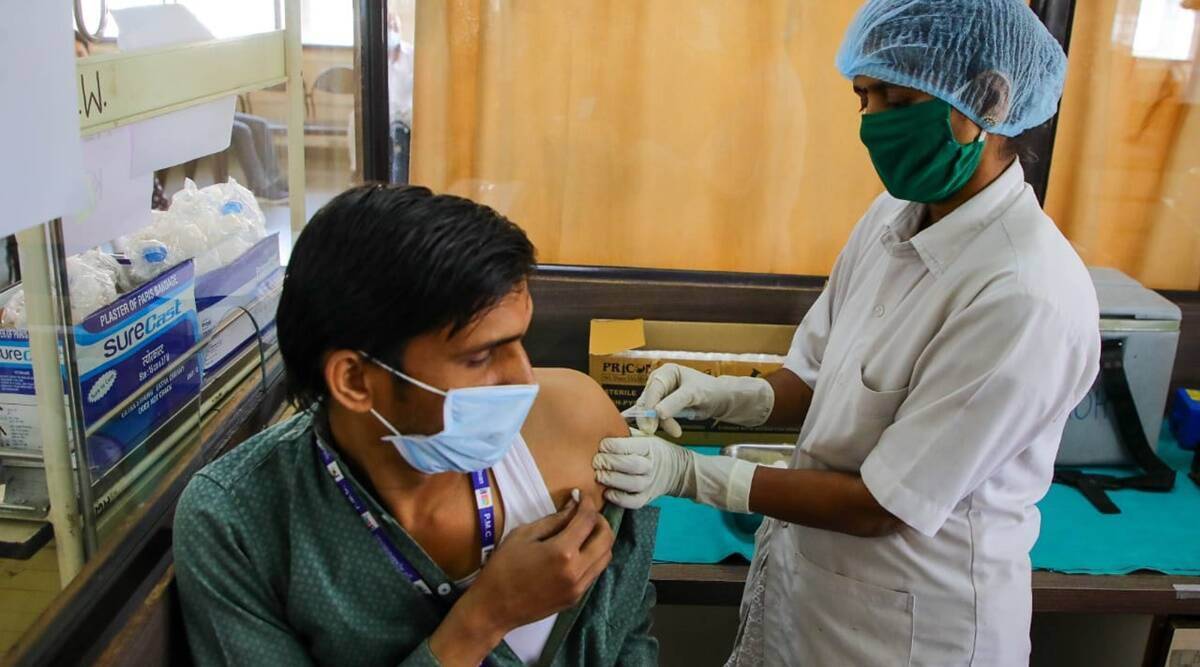 In this wave, we have seen fewer hospitalisations and deaths, as compared to the second wave, definitely due to the vaccination drive. (File)
In this wave, we have seen fewer hospitalisations and deaths, as compared to the second wave, definitely due to the vaccination drive. (File) Prof Madhu Gupta, Department of Community Medicine and School of Public Health, PGI, who led the Covishield vaccine trial team, and Dr Parvinder Chawla, Senior Consultant, Internal Medicine, Fortis Hospital, Mohali, explain how the Covid vaccination has contributed to less severe disease, deaths and hospitalisation
Dr Chawla said that vaccination has surely contributed to less severe disease, deaths, and hospitalisation in this wave. He said that the hospital had strived to record employee data for a breakthrough infection last year in June-July. “About two-thirds of our employees had been fully vaccinated by that time, while about 20 per cent had had Covid. For our hospital, the absolute number of employees who caught the infection during the first wave was higher than the number catching it during the second wave. 67 per cent of the employees had the infection before getting the vaccine (the unvaccinated group), 7.4 per cent caught it after their first dose (the partially vaccinated group) while 25.6 per cent got it after their second dose (the fully vaccinated group). Hospitalisation was required in 18 per cent of the unvaccinated ones, 3.4 per cent of the partially vaccinated ones, and only 2 per cent of the fully vaccinated ones. Similarly, 8 per cent of the unvaccinated faced oxygenation issues while this fraction fell to 3.4 per cent in the partially vaccinated and 4% in the fully vaccinated ones.
If the precaution dose is important for healthy, young people, or only those who are immunocompromised, senior citizens, and healthcare workers, Dr Chawla said that the precaution dose would probably be important but surely not mandatory in the present context of Omicron for healthy, young people. “Their residual immunity from the previous two doses would probably help them tide over this relatively milder variant. We anyway have an issue of vaccine availability at hand and the available lot needs to be used judiciously. It was concerning to see the overcrowding at the vaccination sites last year. We surely do not want that to happen again. Keeping all the perspectives in mind, the present approach seems to be the best middle path.”
As for some reports that the precaution may lower the body’s natural immunity to fight disease, Dr Chawla said, “Absolutely not. The information that is circulating seems to be giving a wrong impression. We need to read between the lines. The exact wording of the statement by EMA is, ‘Repeat booster doses every four months could eventually weaken the immune system and tire out people. Instead, countries should leave more time between booster programs.’. It is the timing that is important and the interval of nine months between the second and the precautionary dose seems to be very appropriate. If multiple vaccines per se were to lower the body’s natural immunity, our childhood vaccination programs would have never succeeded.
Dr Gupta said that in this wave, we have seen fewer hospitalisations and deaths, as compared to the second wave, definitely due to the vaccination drive. Overall, the severity in cases has been also low. Even if we assume that Delta has been more prevalent than Omicron, due to the antibodies and immunity produced by the vaccines, the severity of the disease has been lower, though more severe cases are of Delta. As for the precaution dose, antibodies wane over time and so the population which is at high risks, like the elderly, those with comorbidities, and more exposed to the infection, like the health care workers, the precaution dose is important and will help, as does natural infection.
- The Indian Express website has been rated GREEN for its credibility and trustworthiness by Newsguard, a global service that rates news sources for their journalistic standards.

